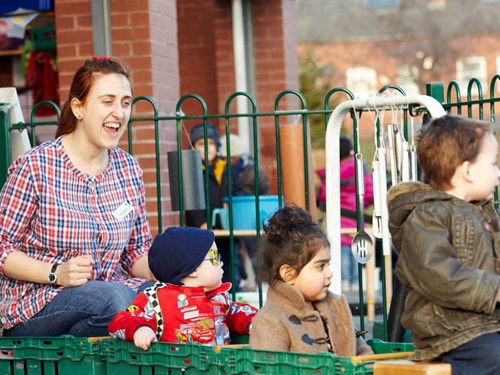Category: Uncategorized
-

Flexible working in teaching: what’s good for the goose is good for the gander
‘ Teacher supply in England remains in a perilous state.’ (NFER, 2023) Whilst effective flexible working in schools has traditionally been a part-time working pattern associated with women teachers with caring responsibilities, this can be stigmatising. But, new legislation means a request to work flexibly is now an option for all, and from the first […]
-

England’s Pisa is decidedly lop-sided
This year’s PISA results were launched in the offices of Policy Exchange. It was a fitting choice – according to Nick Gibb the former schools minister, given that of all the think tanks, Policy Exchange is one of those which has had the greatest influence over the direction of England’s education policy since the election […]
-

Minimising harm in research with multilingual parents – protecting participants through creating translanguaging space
Research ethics in higher education institutions are increasingly led by the mantra: protect the institution, protect the participants, protect yourself. Mostly this is quality assured through increasingly bureaucratic processes involving form filling and standardised risk assessments. As ethics representative for SIOE this has caused me many sleepless nights thinking about whether the multiple ethics forms […]
-

COP28: Opportunities for the education sector
We are now nearly halfway through the 28th Conference of the Parties (COP28) in Dubai. The COP conferences are intended for governments to agree policies to limit global temperature rises and adapt to impacts associated with climate change.Later this week, Friday 8th and Saturday 9th December, the first annual meeting of the Greening Education Partnership […]
-

Speaking volumes and silent echoes: uncovering government priorities for disabled young people in the SEND review
“Language exerts hidden power like the moon on the tides.” Rita Mae Brown (2011) In a recent paper from the Right to Review project, we analysed the SEND Review (Special Educational Needs and Disabilities), a Green Paper that set out the government’s proposed reforms for the SEND system. Our aim was to interrogate “the hidden […]
-

Widening Participation in 2023: shifting policy drivers, shifting institutional responses
Widening participation is essentially about two things: 1) making it easier for underrepresented groups to access higher education than it would be otherwise – a project closely tied to notions of social justice and attempts to eradicate access inequality; 2) it is about ensuring that there is a sufficiently highly educated labour force for the […]
-

Teachers of the world, we salute you!
To celebrate World Teachers’ Day 2023, colleagues at the Sheffield Institute of Education recall the teachers that meant the world to us. Mr Eskdale, Gosforth East Middle School, Newcastle Upon-Tyne, 1976-1979Mr Eskdale understood, as I look back at it now, that if you take an interest in a child, they will be motivated to do […]
-

Shaping South Yorkshire
Last week the Princess of Wales launched the Shaping Us campaign aimed at raising awareness of the importance of early childhood experiences in how we develop physically, socially and emotionally. The campaign starts from the premise that: “The way we develop, through our experiences, relationships, and surroundings during our early childhood, fundamentally shapes our whole […]
-

The toll of the Covid-19 pandemic on children’s wellbeing and mental health. How can we support children in ‘new times’?
Picture this: it’s March 2020; you’re in lockdown; you can only go out once per day for provisions or exercise; and your time is taken up juggling lengthy zoom meetings and home schooling. For many of us, this will be an uncomfortable memory. But in the first few days and weeks of lockdown, we presumed […]
-

It’s who I am, not what I do
On the way back from a trip ‘up North’ (further up as it were) to see my eldest son, we stopped in Boroughbridge (https://www.visitharrogate.co.uk/explore/boroughbridge) for lunch. When I say lunch, I mean we picked up some pies from the butchers to eat by the mediaeval market place. There’s a fabulous stone structure, the Market Well, […]